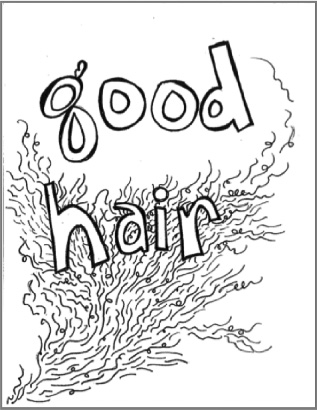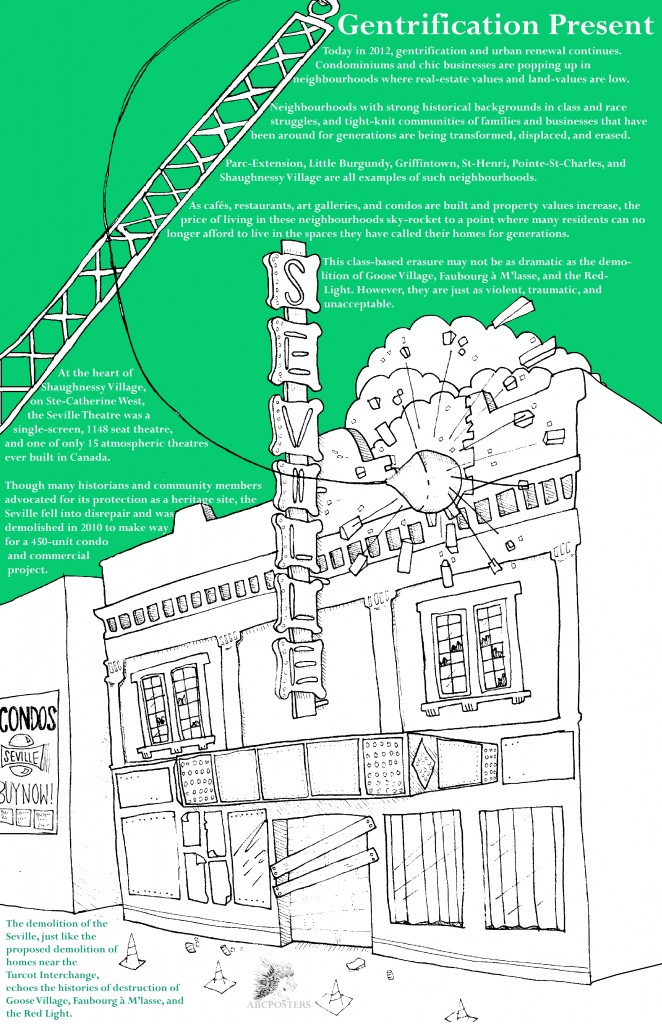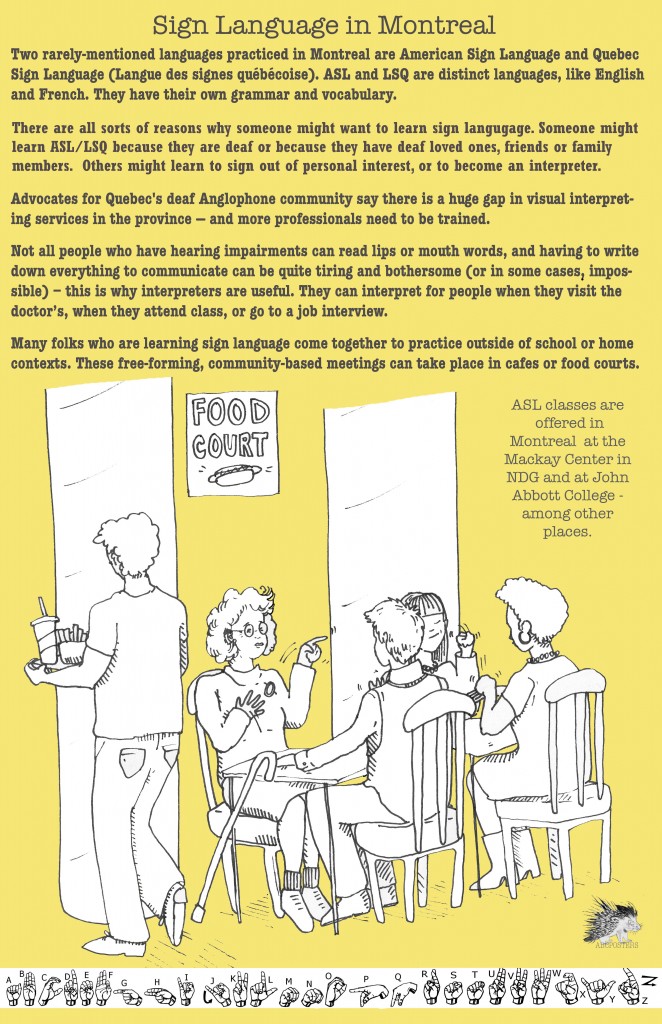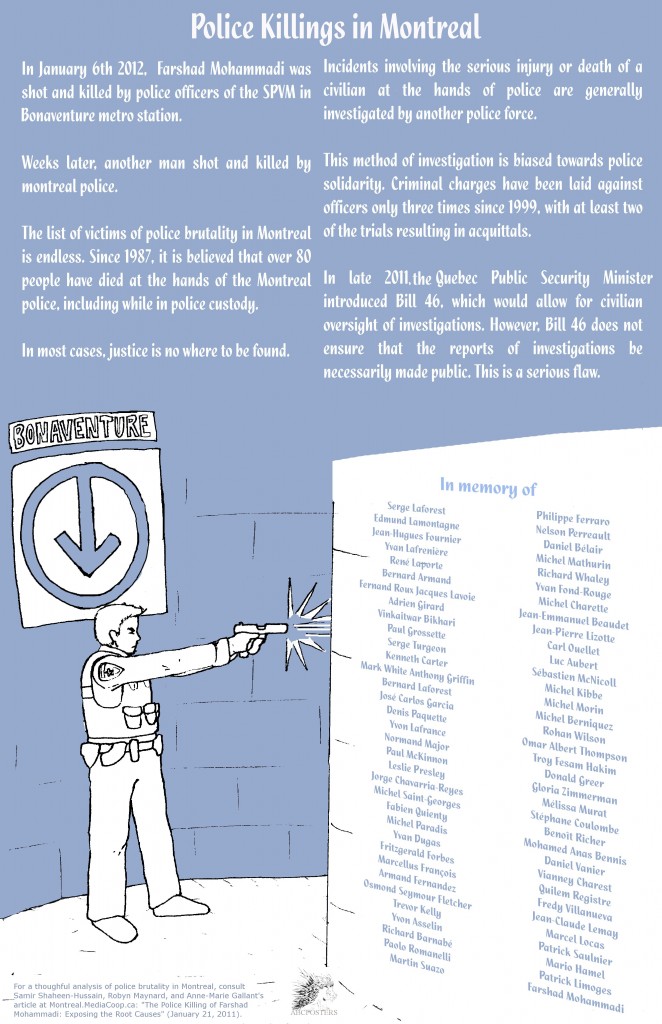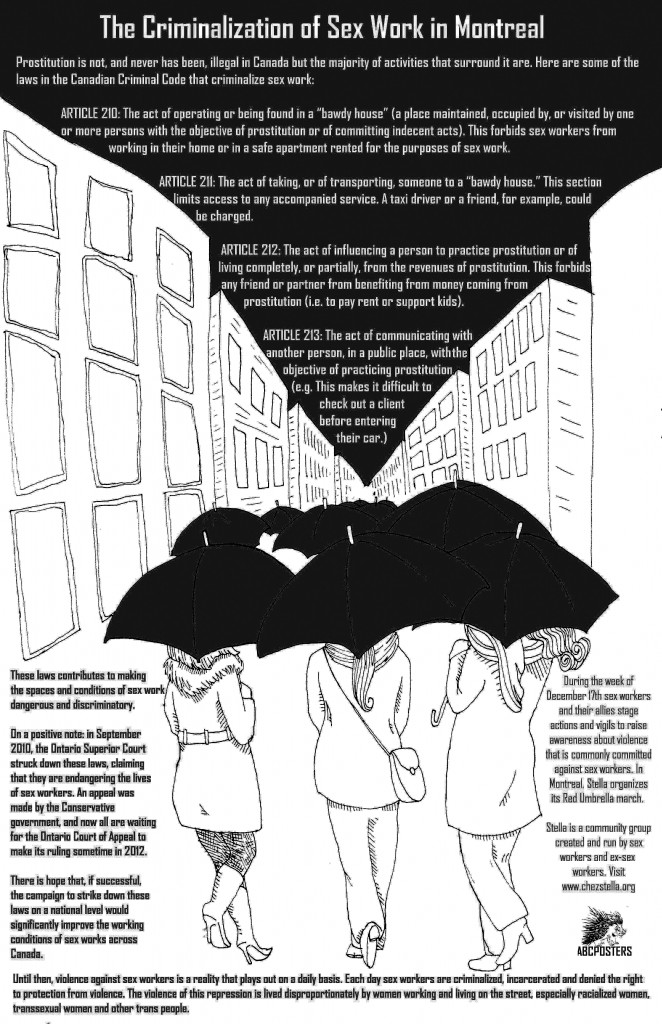Colonialism in Canada’s North: Free Entry, Yukon First Nations, and the Peel Watershed Basin
Gwendolyn Muir,
Undergraduate student of International Development Studies/Spanish
at Dalhousie University; visiting student at Concordia University
This paper was presented at the Study In Action Undergraduate and Community Research Conference (March 2011, Montreal).
“The true North strong and free” is a myth in Canadian nationalism, grounded in colonial legacy. While the idea of “North” occupies a firm place in our national imaginary, it remains largely a southern construction in dominant discourse – and one that is underpinned by political exploitation and neglect. Our southern idealism of the remote North is in many respects similar to the way settlers historically viewed the colony of Canada: a distant, severe, and largely unknown territory, with “land for the taking” to be developed and exploited. Today, colonialism in theory and practice continues to be reenacted in the Canadian North – and, specifically, in the Yukon – via the Free Entry mining system, ineffective devolution, and the subsequent promotion of national and private interests over local needs in resource development and management. As voiced by Farley Mowat: “Yukon Territory is, as it has remained since Klondike times: a classic example of exploitative colonialism in action.”1 The widespread struggle for the protection of the Peel Watershed is a living example of this continuing colonial confrontation, while also demonstrating the ongoing forms of active resistance that First Nations exercise in the face of persistent political power imbalances in Canada’s present-day Yukon Territory.
The concept of Free Entry mining, like our idealisms of “North,” arose in Canada during Britain’s expansionist wave to the “New World.” In the 19th century, miners were viewed as leading settlement:
The land was perceived [by settlers] to be an unpopulated wasteland and its exploitation and settlement were high priorities.2
In 1887, Canada officially “reserved” all mineral rights west of the Third Meridian to the Crown under the Dominion Lands Act.3 A decade later, the Quartz Mining Regulations (1898) effectively implemented Free Entry for the first time on “Canadian” soil.
Colliding with the upsurge of the Klondike Gold Rush, Free Entry directly promoted the exploration and settlement of the Canadian North. It allowed miners to occupy traditional lands, stake claims, lease, produce, and export minerals without consent or compensation to existing aboriginal communities. Prospectors moved to seize and develop as much territory as possible. As voiced by historian Nigel Bankes:
Free entry mining regimes were introduced to suit the needs of a colonial and settler state seeking to develop frontier lands and to wrest control of those lands from their indigenous owners.4
The colonial assumptions behind 19th century federal policy persist today under the Yukon Quartz Mining Act (YQA)* (1924). Mirroring the settler-state inspired legislation of its predecessor, the YQA has been described as “the least-amended mining legislation in Canada.”5 It allows any individual over the age of eighteen to stake a claim on virtually any land – including Settlement Lands, traditional territory, and private property. In Yukon, 79% of the territory (375,900 km²) is available for mineral exploitation. Neither government nor First Nations discretion is required to register a claim, acquire a mineral lease, or develop minerals. Once a claim is staked, the claimant receives exclusive subsurface rights and may maintain those rights indefinitely**.6
* YQA replaced the Quartz Mining Regulations in Yukon.
** Provided that prospectors do a minimum of $100 worth of “representation” work per year. After five years, any miner can apply for a lease that lasts twenty-one years, with right of renewal (Bankes & Sharvit, 1998).
Mineral exploration is not just desired under Free Entry – it is considered the priority. Land management is based on prospector (private) interest, at the expense of local communities, governments, and ecosystems. Mining operates on an unregulated, first-come-first-served basis, creating a “needle-in-a-haystack” rush that undermines any attempt to control the rate at which lands are dispossessed. The result is an overwhelmingly vast territory that is subject to scattered mineral claims, fragmenting the landscape so that it becomes unavailable for other uses (such as conservation, hunting, trapping, subsistence harvest, wildlife, recreation, tourism, etc).7
This frontier ideology assumes that mineral exploration is the best way to use the land.8 It promotes the ethic of development over that of cultural or environmental conservation and self-determination – which, in an age of mass machinery and industrial dredges, is both anachronistic and a violation of constitutionally protected right.9
Section 35(1) of the 1982 Canadian Constitution “recognizes and affirms” aboriginal and treaty rights. These rights may be infringed upon only if that said infringement is justified – that is to say, third parties must meaningfully consult and accommodate aboriginal communities prior to development. Yet, because Free Entry allows individuals to acquire property rights without any discretionary authority, it precludes both consultation and accommodation, leaving no opportunity for a First Nation to object to development. A mining claim on land that is subject to aboriginal title therefore symbolizes a direct prima facie infringement of that title.10
As voiced by the British Columbia Union of Indian Chiefs:
Indigenous Peoples who have entered into treaties with Canada share the common complaint that Canada has steadfastly refused to honour the terms of the treaty or the promises it has made.11
Open staking on First Nations land or traditional territory in Yukon is inconsistent with aboriginal rights and title. Nonetheless, it is a legal right that continues to be granted by legislation and an elected Yukon government.12
In Yukon, the groundwork for land claims agreements was established in the 1993 Umbrella Final Agreement (UFA), a document created by the Yukon Council of First Nations, Canada, and the Yukon Territorial Government (YTG). The UFA was drafted as a structural base for future negotiations of individual Final Agreements, in an attempt to both integrate First Nations people into the state and allow groups to maintain values and traditions vital to their own identities.13Although praised as a progressive step in the mutual arrangement between First Nations and the Crown, the UFA has in effect stripped many aboriginal communities of any tangible control over their traditional lands.
While affirming and recognizing aboriginal rights, the document “conditionally surrendered” all but a small portion of First Nations territory to the YTG.14Making up 22% of the total population, First Nations’ Settlement Lands are only 8.5% of the territory’s land base – the remaining 91.5% lies under government jurisdiction.15Although communities maintain the right to continue subsistence activities on traditional lands and engage in regional land planning, the reality is that the majority of the territory rests under state (Crown) control. As pointed out by anthropologist Paul Nadasdy:
The right to hunt on a particular piece of land, for instance, may not be compatible with the right to log or mine it. And if hunting rights to a particular piece of Crown land does not prevent the government from selling it to a third party or leasing it for development, then those rights are in reality subject to the whims of government, despite their ‘entrenchment’ in the Canadian Constitution. By separating the right to hunt on Crown lands from the right to otherwise use, alienate, or derive income from them, the Yukon agreement guarantees First Nations people the right to hunt only so long as the condition of the land and the state of development in the area allow. It does not give them the right to ensure that such conditions continue to exist.16
Historically, national rather than northern interests have dominated resource use and management in Yukon. Federal authorities have promoted the exploitation of natural resources for generations, with few (if any) benefits to northern communities. In 2003, devolution – the transfer of jurisdiction and authority from the federal government to territorial and indigenous self-governments – was advanced as a solution to this inequitable system.17It was believed that the YTG would be more responsive to the needs and concerns of its own population, including that of First Nations. Rather than create any real change in northern governance, however, the Devolution Transfer Agreement (DTA) adopted mirror legislation, retaining “national interests” in Yukon, with regulations kept low as incentives for developers to continue exploration in the North. According to Natcher & Davis, devolution in Yukon more closely resembles “deconcentration” than any real devolving of power:
The concept of devolution, as applied in the Yukon, remains obscure, if not meaningless, to many First Nations people, and the management of natural resources continues to represent one of the most pervasive remnants of colonial experience.18
In resource development itself, a power imbalance remains: the YTG is a major promoter of oil and gas exploration, is party to any benefits agreements, and, in due course, is the body of power that ultimately decides what will be developed, where, and by whom. Like its federal predecessor, the YTG continues to promote outside interests in a highly centralized development regime that is isolated from many local communities.19This disadvantages First Nations, who bear the brunt of misrepresentation and misrecognition in government. Moreover, state authority determines the parameters of political possibility, which in itself is problematic: “By agreeing to play the land claims game on terms set by the government, First Nations people and their allies help assure that property remains a hegemonic discourse in the arena of aboriginal-state relations.”20
The case of the Peel Watershed is a tangible example of the everyday forms of colonial confrontation and resistance that transpire in present-day Yukon. Comprising 68,000km² in the North-East Yukon, it is the traditional territory of the Tr’ondek Hwech’in (Dawson), Tetlit Gwich’in (Fort MacPherson), Vuntut Gwitchin (Old Crow), and Na-Cho Nyak Dun (Mayo). The area’s relative inaccessibility (due to lack of roads) and status as unceded traditional territory prior to 1993 has allowed for whole ecosystems and traditional livelihoods to be sustained for centuries.21However, despite the groups’ widespread ties to the area, only 3% of the basin is today recognized as First Nations Settlement Land.
Although conservation initiatives have been pushed by First Nations since mineral interest in the region became apparent in the early 1990s – both the Tetlit Gwitchin and Na-Cho Nyak Dun called for protection in their individual Final Agreements – no specific conservation strategy for the Peel was adopted.22Lacking the power to control escalating mineral interest in the area, First Nations moved to participate in the formation of the Peel Watershed Planning Commission (PWPC)* in 2004. This in turn ignited a staking rush that ensued until a moratorium was finally enforced in 2009. Over 8,400 current claims in the Peel, including 525 iron ore leases and coal leases, have been sought under the Free Entry system.23
* “An independent public agency appointed to represent the best interests of the Yukon people” that operates under the umbrella of the Yukon Land Use Planning Council (Yukon Land Planning Council, 2011, para. 1).
Use of the land-planning process as a form of resistance to Free Entry and imperialist governance has been a double-edged sword for the Tr’ondek Hwech’in, Tetlit Gwich’in, Vuntut Gwitchin, and Na-Cho Nyak Dun. The PWPC is a valuable tool that has empowered communities through direct agency, community consultation, and the expression of aboriginal demands. However, it has its drawbacks: working within the structures of government limits aboriginal agency to that which may be recognized as useful to scientists and resource managers, public forums are often subject to bureaucratic language and spaces (boardrooms, etc.) that may alienate First Nation participants, and planning commissions embody and permit the presence of state control where local management has been tradition for generations. By adopting the structures of the state in Commission co-management – just as by signing Final Agreements – First Nations communities are striving to have land rights recognized while simultaneously authorizing the very colonial structures that continue to marginalize them.24
In 2009, the PWPC recommended that 80% of the Peel Watershed should be conserved. Pushing for full protection of the basin, the Yukon Council of First Nations and the National Assembly of First Nations decisively rejected the Plan as insufficient:
The lands and waters of the Peel have unparalleled cultural and ecological significance for our peoples. They have sustained us in body and spirit for thousands of years…It should not be subject to hasty exploitation without thinking of the legacy we leave for future generations.25
First Nations will not idly stand by as outside developers lay their sacred lands to waste in the name of “national development.” In resistance, First Nations communities have banded together with local environmental groups and the Yukon public to fight for the protection of the Peel.26
Meanwhile, mining and government representatives have argued that Free Entry is a legislated right, and therefore the rights of claim holders should continue to be recognized and open staking allowed throughout the Peel.27As contended by Carl Schulze, Chair of the Yukon Chamber of Mines, legislation should not be contradicted:
Ending free staking will destroy the idea of personal property in the name of ‘values’… we have to govern our country by this rule of law, we can’t govern by values because it could be anybody’s values, or any one group of persons’ values, or any one single ethnic group, or single interest group…28
Ironically, Schulze’s statement assumes that Free Entry itself is objective, and that it does not represent any particular group or body of “values.”
No matter, decision-making power is ultimately in the hands of the Yukon Territorial Government* – a government that continues to represent private over public interest, promote Free Entry without consultation, and deny effective devolution to aboriginal communities. Like Schulze, the YTG has stated that the PWPC plan is “unworkable” for development and infringes upon the mineral rights of miners – despite the fact that an overwhelming 71% of the Yukon population supports full protection.29Rather, economic considerations – mirroring our mythological narratives of the North – have been prioritized above all other concerns: “Make no mistake in assessing the negative impact that this land use plan recommendation will have on the mineral exploration industry in the Yukon; the Yukon whose very essence and character are wrapped up completely with the ‘lure of Yukon gold.’”30
* The YTG will accept or reject the Final Recommended Land-Use Plan in autumn, 2011 (Frost, Taylor, Loeks, Kaye, Genier, & Hayes, 2009).
The North continues to occupy an important place in our national imaginary, yet it is far from being “strong and free.” Free Entry and the imperial ideology behind it has been normalized and institutionalized in Yukon and in our idea of “North, land for the taking” for over a century. The fight for the conservation of the Peel Watershed is a living example of colonialism that dominates daily discourse in Canada and in our approach toward the management and development of resources in the North. Free Entry mining, failed devolution, and the continued prominence of national over local interests have and continue to put the traditional lands of Yukon First Nations – as well as aboriginal communities across Canada – into the hands of private developers. Furthermore, the negotiation and implementation of land agreements and planning initiatives limit aboriginal governance and force groups to conform to the existing legal and political parameters of the Westphalian state. Aboriginal-state relations remain premised on the idea of state expansion and control, in which the underlying title of the Crown is unquestioned.
Colonialism is not just an issue of the past – it is real, tangible, and current. Free Entry legislation should be repealed, governments should work to make devolution actually effective in local communities, and the Peel should be protected as Yukoners wish it to be. Furthermore, in order for self-government – and, in turn, resource management – to truly be empowering to First Nations communities, we must re-examine and restructure the very foundations and underlying assumptions on which management is based, and we must take responsibility for our colonial legacy. The communities and peoples of the North need our recognition and support. For change in the North, we must first transform the imperialist narratives that have dominated northern history and constructed our views of northern lands. For, as voiced by author Grace Sherill:
Not only are our ‘nordicity’ and our sub-Arctic and Arctic geography inescapable realities, but the North is deeply embedded in all that we do…. We will not change Canada by jettisoning the idea of North but by interpolating new voices into the dialogue, by actively participating in the unfinalizable process of what I call the discursive formation of North.31
Endnotes:
1. (Mowat, 1967, 154)
2. (Taggart, 1998, 8 )
3. (NWT & Nunavut Chamber of Mines, 2001)
4. (Bankes, 2004, 322)
5. (Taggart, 1998, 9)
6. (Campbell, 2004; CPAWS-Yukon, 2010; Bankes, 2004)
7. (Bankes, 2004; Campbell, 2004).
8. (Munson, 2009; Taggart, 1998; Bankes, 2004)
9. (Bankes & Sharvit, 1998)
10. (Bankes & Sharvait, 1998; Bankes, 2004; Campbell, 2004; Union of BC Indian Chiefs, 2010)
11. (Union of BC Indian Chiefs, 2010, para. 68)
12. (Yukon Chamber of Mines, 2009)
13. (Nadasdy, 2002)
14. (Government of Canada, Yukon Council of First Nations & YTG, 1993)
15. (Indian and Northern Affairs Canada, 2009)
16. (Nadasdy, 2002, 256-7)
17. (Irlbacher-Fox & Mills, 2007)
18. (Natcher & Davis, 2007, 272)
19. (Mowat, 1967; Irlbacher-Fox & Mills, 2007)
20. (Nadasdy, 2002, 258)
21. (Yukon Parks, 2008)
22. (Peepre, 2007)
23. (Rifkind & Gulliver, 2009)
24. (Sandlos, 2008; Nadasdy, 2002; Frost, et al, 2009)
25. (Official First Nations response, 2010, para. 3 & 10)
26. (Garon, 2010)
27. (Munson, 2010)
28. (Munson, 2009, para. 24)
29. (CPAWS-Yukon, YCS, & WTAY, 2010)
30. (Yukon Chamber of Mines, 2009, 10)
31. (Sherrill, 2001, 23)
Sources:
Bankes, N. (2004). Case for Abolition of Free Entry Mining Regimes. Land, Resources, and Environmental Law, 24, 317-333.
Bankes, N. and Sharvit, C. (1998). Aboriginal Title and Free Entry Mining Regimes in Northern Canada. Northern Minerals Program Working Paper 2. Canadian Arctic Resources Committee.
Campbell, K. (2004). Undermining Our Future: How Mining’s Privileged Access to Land Harms People and the Environment, a Discussion Paper on the Need to Reform Mineral Tenure Law in Canada. BC: West Coast Environmental Law.
Canadian Broadcasting Corporation (CBC) (2010, December 17). Yukon disagrees with Peel Watershed plan. Canadian Broadcasting Corporation. Retrieved from www.cbc.ca.
Canadian Parks and Wilderness Society-Yukon (CPAWS-Yukon), Yukon Conservation Society (YCS),
and the Wilderness Tourism Association of the Yukon (WTAY). (2010). Review of Public Consultation: Peel Watershed. Whitehorse: DataPath Systems.
Canadian Parks and Wilderness Society-Yukon (CPAWS-Yukon). (2010) Time to End Archaic Free Entry Mining Laws in Yukon. Retrieved from www.cpawsyukon.org.
Frost, M., Taylor, S., Loeks, D., Kaye, P., Genier, A., & Hayes, R. (2009, revised in 2010). Recommended Peel Watershed Land Use Plan. Whitehorse: Peel Watershed Planning Commission. Retrieved from http://www.peel.planyukon.ca.
Garon, A. (2010, September 16). Assembly of First Nations Supports Yukon First Nations in Rejecting Territorial Government’s Development Plans for Peel Watershed. Turtle Island News.
Government of Canada, Yukon Council of First Nations, and Government of Yukon (1993). Umbrella Final Agreement. Whitehorse: Government of Canada.
Green, J. A. (1995). Towards a Détente with History: Confronting Canada’s Colonial Legacy. International Journal of Canadian Studies, 12, 1-20.
Guillver, T. & Rifkind, L. (2009, May 28). Free Entry, Fair Play, and Canada’s Far North. Rabble News. Retrieved from www.rabble.ca/news/2009/05/fair-play-and-far-north.
Indian and Northern Affairs Canada (2009). Building the Future: Yukon First Nations Self Government. Whitehorse: Indian and Northern Affairs Canada. Retrieved from www.ainc-inac.gc.ca/ai/scr/yt/pubs/btf-eng.pdf.
Mills, S. J. & Irlbacher-Fox, S. (2007). Devolution and Resource Revenue Sharing in the Canadian North: Achieving Fairness Across Generations. NWT: Discussion paper at the Northern Policy Forum, commissioned by the Walter and Duncan Gordan Foundation.
Munson, J. (2009, April 22) Free Staking Must Change: Peel Land-Use Plan. Yukon News.
Munson, J. (2010, Dec. 17). Peel Land-Use Plan Too Protective: YTG. Yukon News.
Nadasdy, P. (2002). “Property” and Aboriginal Land Claims in the Canadian Subarctic: Some Theoretical Considerations. American Anthropologist, New Series, 104, 1, 247-261.
Natcher, D. C. & Davis, S. (2007). Rethinking Devolution: Challenges for Aboriginal Resource Management in the Yukon Territory. Taylor & Francis Group, 20, 271-279.
NWT and Nunavut Chamber of Mines (2001). Free Entry Access to Minerals in Canada’s North. DRAFT Report.
Peepre, J. (2007). Three Rivers: Protecting the Yukon’s Great Boreal Wilderness. USDA Forest Service Proceedings, 558-564.
Sherill, G. E. (2001). Canada and the Idea of North. Canada: McGill-Queen’s University Press.
Sandlos, J. (2008). Wildlife Conservation in the North: Historic Approaches and their Consequences; Seeking Insights for Contemporary Resource Management. Canadian Parks for Tomorrow: 40th Anniversary Conference, University of Calgary.
Taggart, M. (1998). The Free Entry Mineral Allocation System in Canada’s North: Economics, Sustainability and Alternatives. Working Paper for the Canadian Arctic Resources Committee (CARC).
Union of British Columbia Indian Chiefs. (2010). Canada’s Struggle to Extinguish Aboriginal Title. Retrieved from www.ubcic.bc.ca/Resources /certainty.htm.
United First Nations Parties (Tr’ondek Hwech’in, Tetlit Gwich’in, Vuntut Gwitchin, and Na-Cho Nyak Dun) (2011). Response to Recommended Peel Watershed Land Use Plan. Whitehorse.
Yukon Archives (2009). La Ruée Vers L’Or du Klondike Gold Rush. Retrieved from www.tc.gov.yk.ca/archives/klondike/en/prologue.html.
Yukon Chamber of Mines. (2009). Commentary on the Draft Final – Peel Watershed Land Use Plan. Whitehorse.
Yukon Parks (2008). Peel Watershed, Yukon: International Significance from the Perspective of Parks, Recreation, and Conservation. Whitehorse: Department of Environment, YTG.



